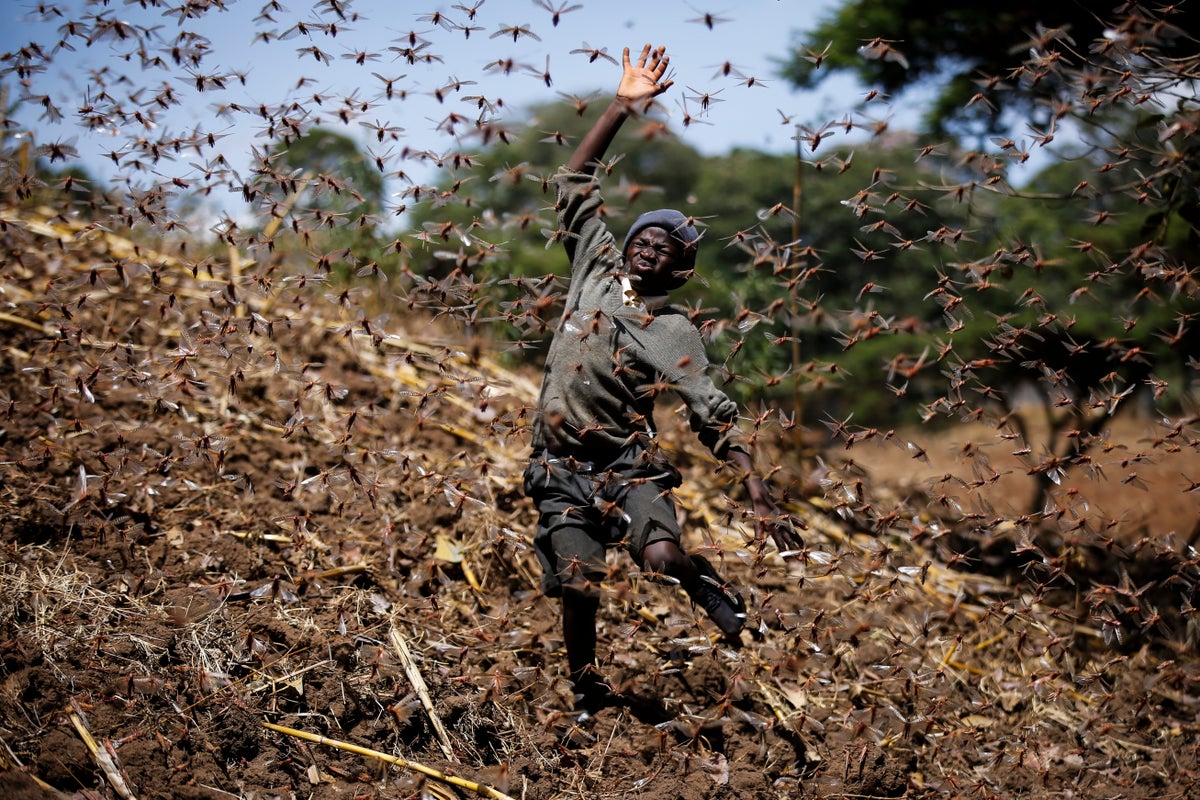
Locusts avoid being cannibalised by others when they are in swarms by producing a smelly hormone, a new study has revealed.
Swarms of migratory locusts have taken on the proportions of natural disasters in recent years and have threatened food supply for millions, primarily in Africa and Asia.
Locusts’ swarming behavior is believed to be because of individual insects in such swarms being perenially on the run from others to avoid being cannibalised.
The findings of the new study, published in the journal Science on Thursday, have now shown that a smelly pheromone called phenylacetonitrile (PAN) underpins an “anti-cannibalistic” chemical signaling pathway in locusts.
Scientists believe the discovery of this hormone’s effects can provide a target for locust management strategies since cannibalistic interactions among the insects are behind the creation of swarms.
The findings could also lead to the development of new pesticides to tackle the insects’ devastation of the global food supply.
“We wondered how these insects influence each other’s behavior within huge swarms, and whether olfaction plays a role,” said Bill Hansson from Germany’s Max Planck Institute.
Previous research has shown that locust migration, which leads to the devastation of millions or billions of tonnes of crops, occurs in different phases.
In the solitary phase, scientists said, the insects live individually and stay in the area.
Then in the gregarious phase, they exhibit swarming behavior that leads to their migration.
In most cases, locusts are in the solitary phase, eating comparatively little food. But this changes if the population density increases due to rainfall and sufficient food.
“The insects change their behavior within a few hours; they can smell, see, and touch each other,” study co-author Hetan Chang said.
“These three types of stimulation increase serotonin and dopamine levels in the locust brain, causing solitary locusts to become aggressive gregarious locusts that are very active and have a large appetite,” Dr Chang explained.
The insects also release pheromones that eventually lead to swarming and poses a huge threat to agricultural production.
“Cannibalism does only occur in the gregarious phase,” Dr Chang said.
Experiments conducted by scientists with the migratory Locusta migratoria locust showed cannibalism rates increased with the number of gregarious animals that were kept together in a cage.
To determine if these gregarious locusts emit particular odours that are not produced in the solitary phase, researchers analysed and compared all odours emitted by these insects in the juvenile stage.
In the experiments, PAN turned out to be an odour signal that deterred other locusts.
When scientists used genetically modified locusts that could no longer produce PAN, they found strong cannibalistic effects.
“Cannibalism was again significantly increased when the animals were no longer able to produce the compound,” Dr Chang said.
Since cannibalism has a major impact on locust swarms, researchers said the effect of PAN opens up new possibilities of locust control.
“If you inhibit the production of PAN or the function of the receptor, you could get the locusts to behave more cannibalistically and potentially control themselves in that way,” Dr Hansson said.







